Which is the Toughest Char Dham Yatra? Challenge That Will Push You to the Limits! Find Out Here
🧱 Outline of the Article
- Which is the Toughest Char Dham Yatra?
- Introduction to the Char Dham Circuit
- Why Char Dham Treks Vary in Difficulty
- Geographical Diversity
- Weather and Altitude
- Infrastructure and Road Access
- Gangotri Dham – Easy Yet Emotionally Stirring
- Route and Accessibility
- Highlights and Spiritual Essence
- Trek Challenges (Gaumukh Trek)
- Yamunotri Dham – Short But Demanding Trek
- Route and Terrain
- Pony, Palki, and Porter Services
- Key Challenges to Watch Out For
- Kedarnath Dham – The Ultimate Physical Test
- The 17 km Uphill Trek
- Altitude, Acclimatization & Health Risks
- Weather Extremes and Spiritual Strength
- Badrinath Dham – Comfortable but Cold
- Smooth Road Connectivity
- Chilly Winds and High Elevation
- Energy Required for Exploration
- Physical & Logistical Comparison Table
- Ideal Order of Visit (Time vs. Effort vs. Acclimatization)
- Trek Support Services and Preparation Tips
- Available Services (Porters, Ponies, Helicopters)
- When to Avoid the Trek
- Trek Gear Checklist + Affiliate Block
- Shoes, Jackets, Poles & Essentials
- Recommended Products with Affiliate Links
- Mental Preparation: More Than Just a Physical Test
- Cultivating Patience and Inner Strength
- Mindset for Beginners and Seniors
- Stories of Devotees Who Made It Despite the Odds
- Real-Life Experiences from Kedarnath and Yamunotri
- Lessons Learned from the Journey
- Which is the Toughest Char Dham Yatra? Final Verdict
- Conclusion
- FAQs
- Is Kedarnath tougher than Yamunotri?
- Can senior citizens do the Char Dham Yatra?
- Which Dham has helicopter services?
- What is the best time to visit Char Dham?
- Can beginners do the Char Dham Yatra?
🛕 Which is the Toughest Char Dham Yatra? Challenge That Will Push You to the Limits!
The Char Dham Yatra isn’t just a pilgrimage — it’s a journey that tests your soul, your stamina, and your spiritual grit. But which is the toughest Char Dham Yatra? If you’ve asked this question while planning your spiritual expedition through the Garhwal Himalayas, you’re not alone.
Let’s break down the difficulty level of each Dham, trek by trek, with real comparisons, gear advice, and a few surprising truths to help you prepare mentally and physically for this sacred challenge.
🌄 Introduction to the Char Dham Circuit
The Char Dham Yatra of Uttarakhand includes four sacred shrines:
- Shri Yamunotri Dham – Source of the Yamuna River
- Shri Gangotri Dham – Origin of the Ganga
- Shri Kedarnath Dham – A jyotirlinga of Lord Shiva
- Shri Badrinath Dham – Shrine of Lord Vishnu
Each Dham is unique in location, route, and intensity. While some can be accessed by road, others demand grit and uphill treks through rugged Himalayan terrain.
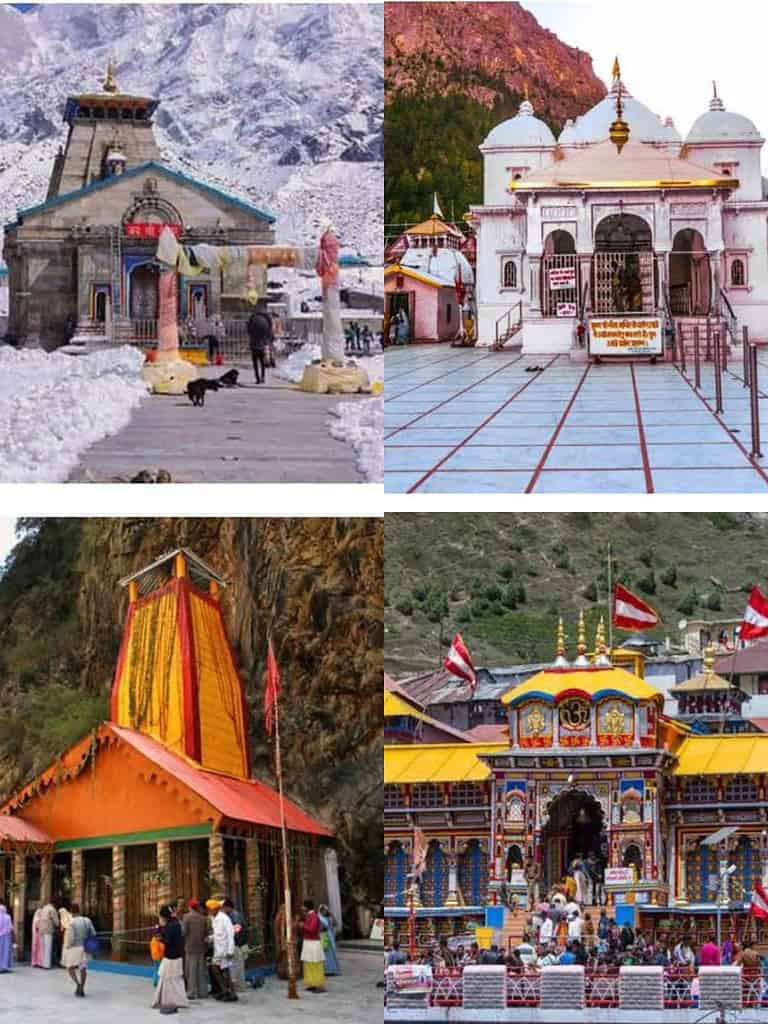
Char Dham of Uttarakhand
Char Dham of Uttarakhand is a series of temples above 10,000 feet in the Himalayas, holding immense spiritual values that are collectively known as Char Dham of Uttarakhand.
The first one is Shri Badrinath or Shri Badri Vishal(10,170), dedicated to Lord Vishnu, the second one is Shri Kedarnath(11,755), dedicated to Lord Shiva, the third is Shri Gangotri(10,200), dedicated to goddess Ganga, and the fourth and last one is Shri Yamunotri(10,804), dedicated to goddess Yamuna.
🌍 Why Char Dham Treks Vary in Difficulty
🌐 Geographical Diversity
These four temples are scattered across different elevations, valleys, and terrains of Uttarakhand. While Gangotri and Badrinath are motorable, Kedarnath and Yamunotri involve significant trekking.
🌦️ Weather and Altitude
From snow-covered trails to high-altitude sickness, the elements in the Himalayas can be brutal. Yamunotri and Kedarnath are notorious for unpredictable rain and landslides.
🛣️ Infrastructure and Road Access
The roads to Badrinath and Gangotri are mostly smooth. However, roads to Yamunotri base (Janki Chatti) and Gaurikund (for Kedarnath) often get damaged due to landslides, requiring extra travel time and caution.
Every step in the Char Dham Yatra is not just a movement through the Himalayas—it’s a soul-stirring pilgrimage that tests your endurance, faith, and spiritual resolve. Each of the four dhams—Gangotri, Yamunotri, Kedarnath, and Badrinath—offers a different kind of experience: some easier on the body, others tougher on the soul.
Let’s walk through each of these sacred destinations to understand their routes, physical challenges, and emotional depth.
🕉️ Gangotri Dham – Easy Yet Emotionally Stirring
🚗 Route and Accessibility
Gangotri is one of the most easily accessible of the four dhams by road. After reaching Uttarkashi, a well-paved road leads you to Gangotri town—no treks required unless you go beyond.
- Nearest major town: Uttarkashi
- Last motorable point: Gangotri town itself
- Total driving distance from Rishikesh: ~290 km
You can drive all the way to the Gangotri temple, making it especially suitable for seniors and families with kids.
🌊 Highlights and Spiritual Essence
Gangotri isn’t just about ease—it’s the spiritual heartbeat of the Ganga.
This is where Maa Ganga is believed to have descended from heaven, and the sacred Bhagirathi river gushes right beside the temple. The high-altitude setting, glacier-fed water, and chilly winds often move devotees to tears.
You can literally hear the Ganga roar like a lioness—a reminder of divine power and purity.
🥾 Trek Challenges (Gaumukh Trek)
While the main temple is drive-in, adventure seekers can take on the Gaumukh Trek (18 km one-way) starting from Gangotri to the snout of the Gangotri Glacier.
- Distance: 36 km round-trip
- Difficulty: Moderate to Challenging
- A permit is required from the forest department
The physical challenge increases dramatically, but so does the spiritual intensity. Watching the sacred Ganga emerge from a glacier is an unforgettable moment.
“Is the Gangotri trek difficult?” — If you are thinking about this, you’re not alone. This is one of the most misunderstood questions on the internet.

🕉️ Yamunotri Dham – Short But Demanding Trek
🗺️ Route and Terrain
Unlike Gangotri, Yamunotri requires a trek. You can drive up to Janki Chatti, and from there it’s a 5 to 6 km steep trek to the temple.
- Terrain: Steep and rocky
- Route: Mostly paved but narrow
- Time required: 3–6 hours one way
While short, the incline and crowd make this trek more exhausting than expected.
🐎 Pony, Palki, and Porter Services
Luckily, Yamunotri offers plenty of support for pilgrims who find trekking tough:
- Palkis (sedan chairs) for senior citizens
- Ponies for faster ascent
- Pitthus (porters) to carry bags or children
If you’re not used to hiking, these services can be a lifesaver, especially during peak season when trails get jam-packed.
⚠️ Key Challenges to Watch Out For
- Altitude gain is rapid, which can make you breathless
- Crowded and slippery during the monsoon
- Limited shelter on the way, so sun or rain can be brutal
Despite being one of the “easier” treks, Yamunotri can surprise you with its intensity.
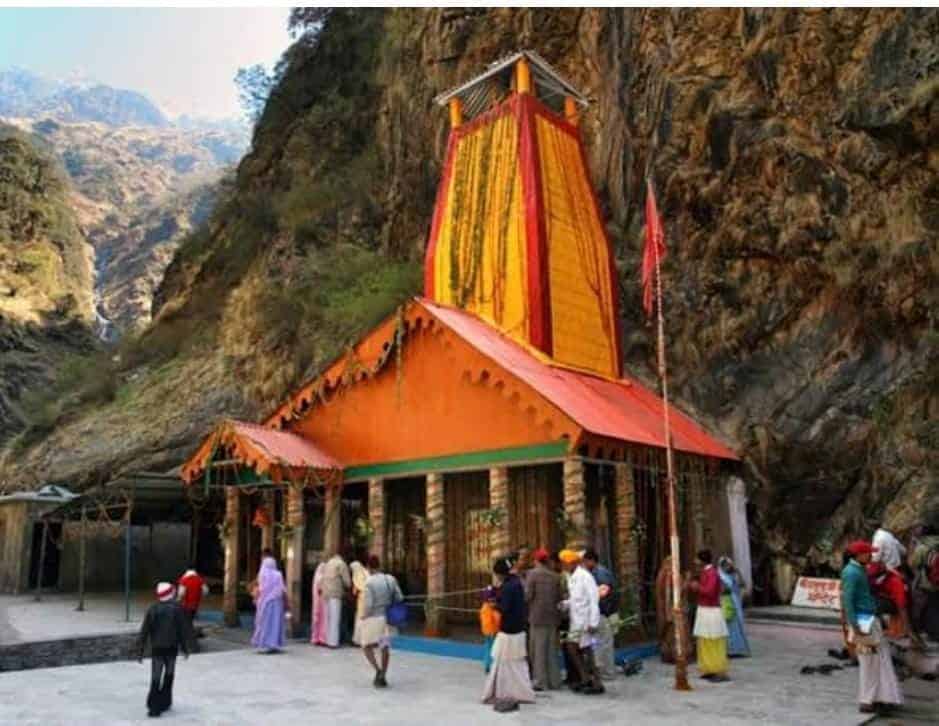
🕉️ Kedarnath Dham – The Ultimate Physical Test
⛰️ The 17 km Uphill Trek
Kedarnath is not for the faint-hearted. The 17 km trek from Gaurikund to Kedarnath Temple is one of the most physically demanding parts of the Char Dham Yatra.
- Steep incline from 6,000 ft to 11,755 ft
- The path can be rocky, slushy, or snowy
- Takes 6 to 12 hours one-way
The uphill climb through rugged terrain can break you physically—but uplift you spiritually.
🌬️ Altitude, Acclimatization & Health Risks
Kedarnath’s high altitude poses real challenges:
- Altitude Sickness (AMS) is common
- Oxygen levels drop as you ascend
- Those with heart or lung issues must take extreme care
Acclimatization is key. Spend a night at Guptkashi or Sonprayag to prepare your body.
❄️ Weather Extremes and Spiritual Strength
The weather is wildly unpredictable. One moment it’s sunny; the next, fog or hail may roll in.
But it’s precisely this rawness that tests and transforms you. Standing in front of the majestic Kedarnath temple after that grueling trek often leads to tears—not of pain, but of divine surrender.
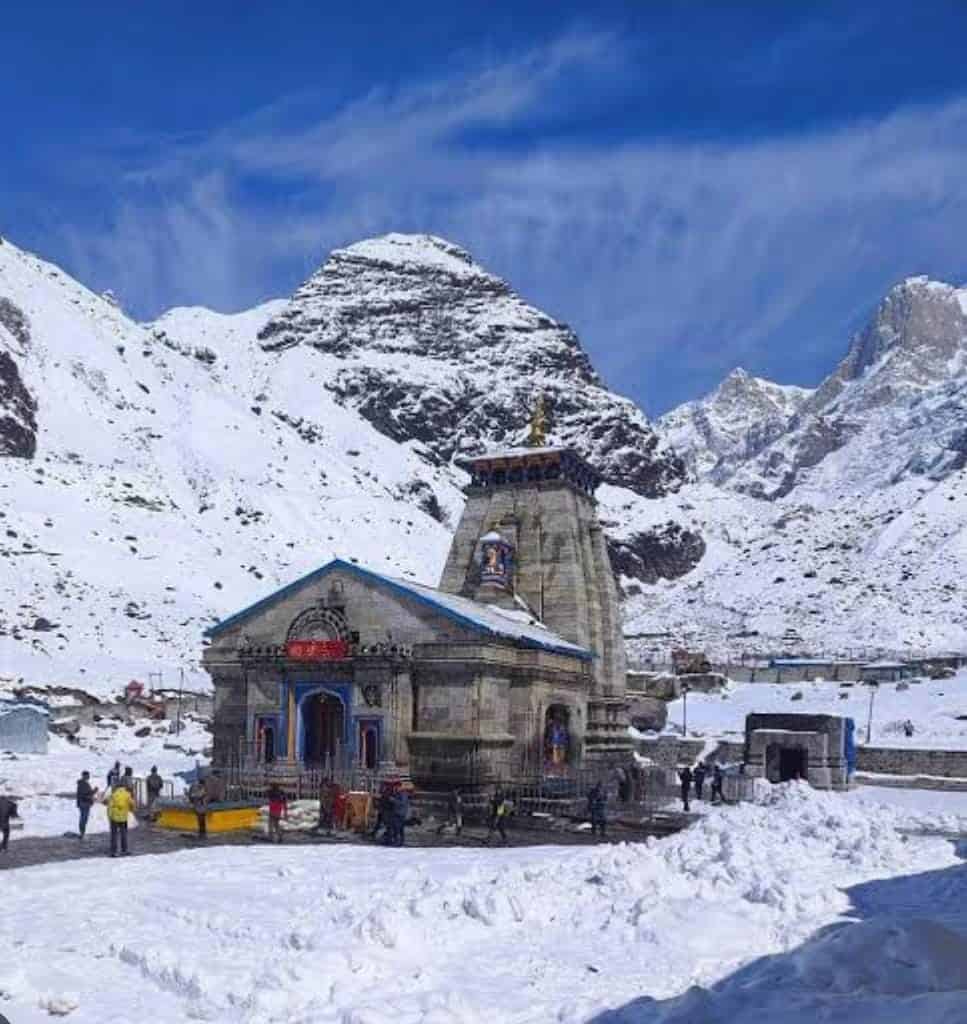
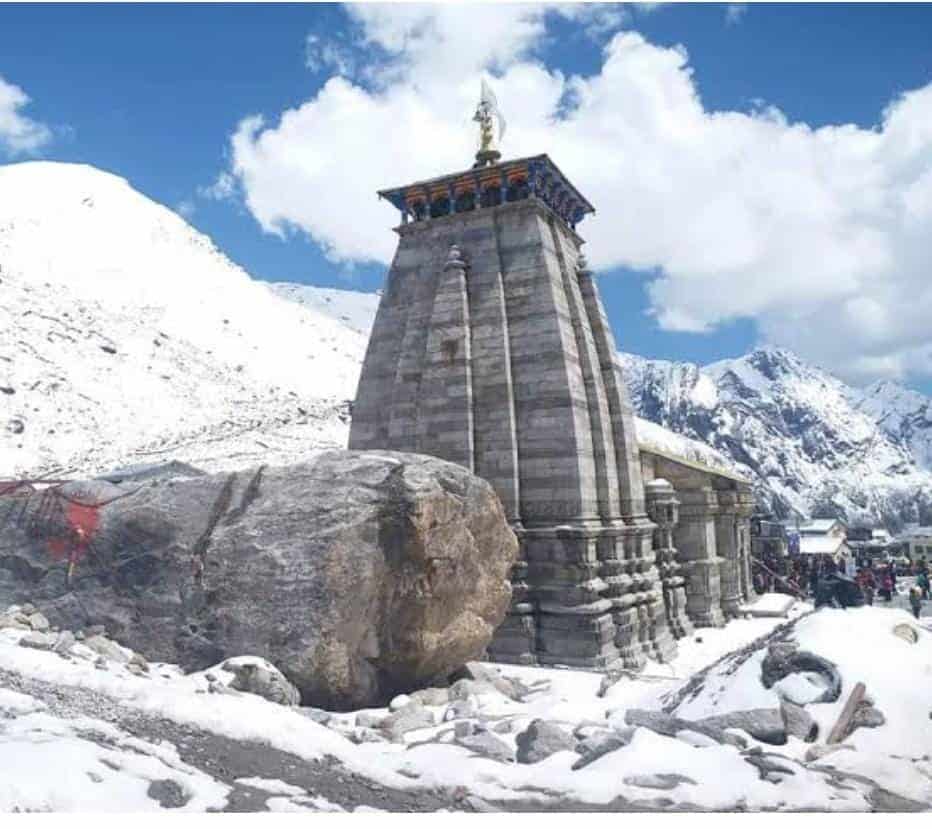
🕉️ Badrinath Dham – Comfortable but Cold
🚐 Smooth Road Connectivity
Badrinath is arguably the most easily accessible dham. Roads are excellent, and the final stop—Badrinath town—is right next to the temple.
- Distance from Rishikesh: ~300 km
- Bus, car, or shared taxi all go directly
- No trekking required
Perfect for those seeking a comfortable pilgrimage.
🌬️ Chilly Winds and High Elevation
Don’t let the road access fool you. At 10,200 ft, Badrinath is high and windy.
- Cold temperatures even in summer
- Wind chills can be biting, especially at night
- Elderly or kids need proper thermal wear
You may not walk much, but the thin air and cold still drain your energy.
💪 Energy Required for Exploration
Beyond temple darshan, Badrinath has many sacred spots:
- Tapt Kund (hot water spring)
- Mana Village (the last village before Tibet)
- Vyas Gufa and Bhim Pul
Walking around these sites, climbing small hills or stairs requires a decent level of fitness, especially in low-oxygen conditions.
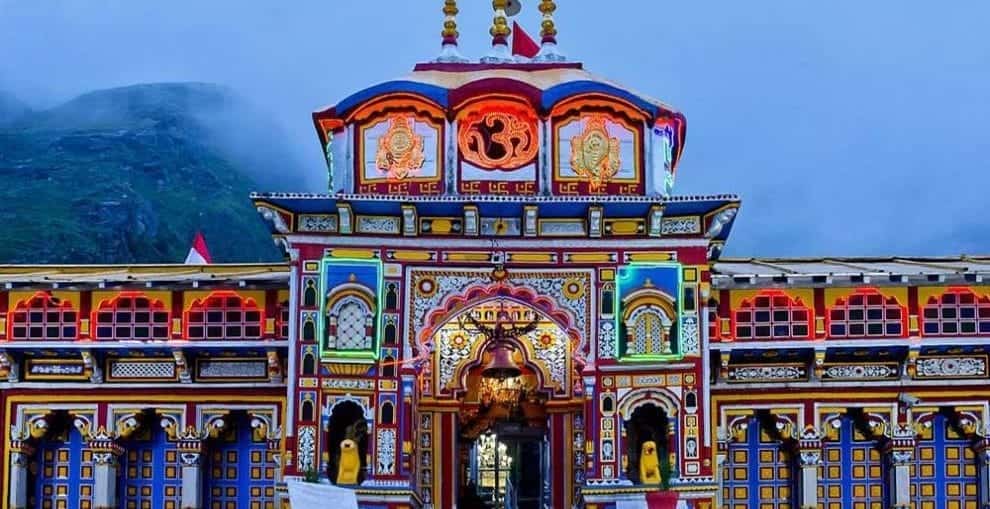
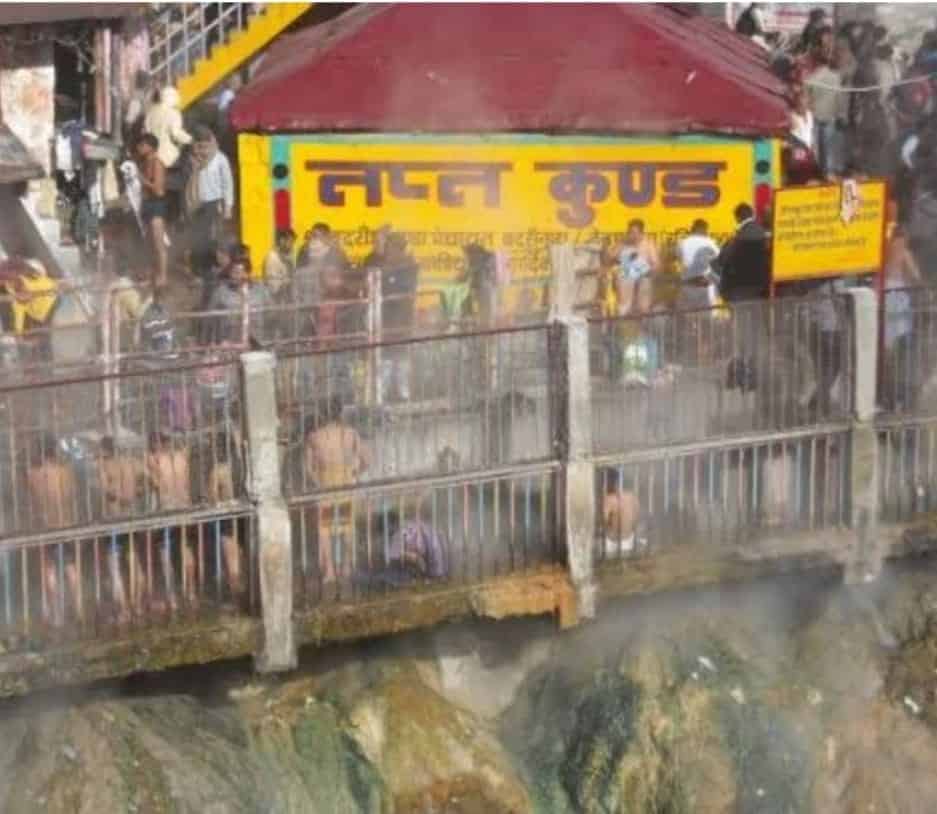
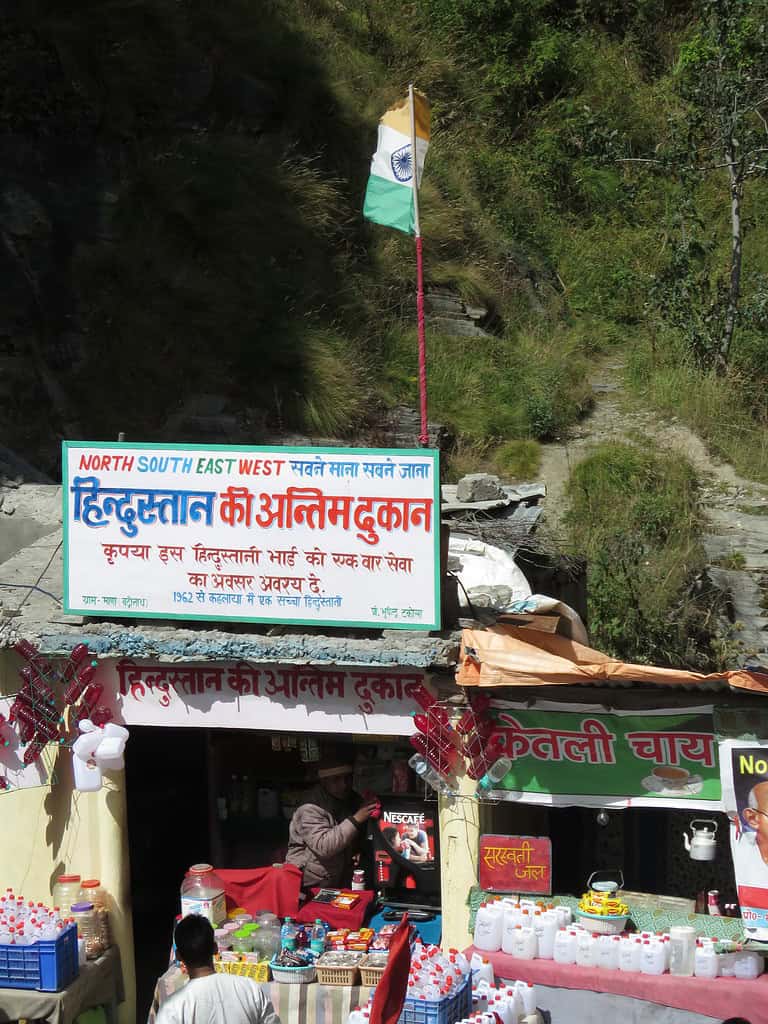
📊 Physical & Logistical Comparison Table
Dham |
Trek Required |
Difficulty Level |
Altitude (m) |
Road Access |
Common Risks |
| Gangotri | No (Gaumukh optional) | Easy | 3,100 | ✅ Yes | Cold, altitude |
| Badrinath | No | Easy | 3,100 | ✅ Yes | Cold, crowds |
| Yamunotri | 6 km steep trek | Moderate | 3,293 | ❌ No | Steep path, rain |
| Kedarnath | 17 km uphill | Very Hard | 3,583 | ❌ No | AMS, weather, exhaustion |
📅 Ideal Order of Visit (Time vs Effort vs Acclimatization)
To minimize exertion and risk of altitude sickness, here’s an ideal route:
- Yamunotri (Shortest trek, lower altitude)
- Gangotri (Motorable, mid-altitude)
- Kedarnath (Most demanding, high altitude)
- Badrinath (Easiest end to the journey)
This order allows for gradual altitude gain and better physical adaptation.
🧭 Trek Support Services and Preparation Tips
🏇 Available Services
- Porters and Palkis: Available in Yamunotri and Kedarnath
- Ponies/Mules: Useful for elderly or less fit pilgrims
- Helicopter Services: Available for Kedarnath and Badrinath
⛔ When to Avoid the Trek
- Avoid the monsoon (July–August) due to landslides
- Avoid post-Diwali due to snowfall
🎒 What to Pack for Kedarnath Dham Yatra (with Essential Trekking Gear)
Packing smart for Kedarnath Dham Yatra is not just about convenience—it’s about comfort, safety, and survival at high altitude. Here’s a list of essential items I personally use or recommend, based on multiple Yatras in all seasons.
Trekking Shoes (Top Priority!)
If there’s one item that can make or break your Yatra, it’s your shoes.
Avoid sports shoes. You need proper trekking shoes with ankle support, grip, and water resistance.
Recommended Picks
- Budget Trekking Shoes (Rs. 1000–2500)
- Mid-Range Waterproof Hiking Boots
- Premium All-Weather Trekking Shoes
I’ve used these on the Kedarnath Dham Yatra trail during peak rains and slushy patches—and my feet thanked me every step.
Rain Jackets, Ponchos & Windcheaters
The weather in Kedarnath can turn from sunny to stormy in minutes.
Must-Pack Rain Gear:
- Reusable Rain Poncho (Unisex) – Lightweight and Compact
- Windproof & Waterproof Jackets – For Cold & Rain
- Rain Pants for Trekking – Stay Dry Waist-Down
Pro Tip: Pack a disposable raincoat as backup.
Thermals, Gloves, and Layered Clothing
Even in summer, mornings at Kedarnath can feel icy.
Suggested Items:
- Thermal Set for Men/Women – Soft & Breathable
- Woolen Gloves + Touchscreen Friendly Options
- Fleece Jacket (Optional Mid-layer)
Layer smartly: base thermal + fleece + jacket.
Head Torch or Flashlight
In remote areas, power cuts are common and trails can be pitch-dark early morning.
Best Options:
Energy Snacks, Dry Fruits, and Hydration
Long treks demand quick energy. I usually carry:
- Energy Bars (Chocolate/Nut Mix)
- Packaged Trail Mix or Dry Fruits
- Insulated Water Bottle or Hydration Pouch
Tip: Hydrate regularly to fight altitude fatigue.
Essential Health & Safety Kit
Never skip these:
- Basic First Aid Kit + Pain Relief Spray
- AMS (Altitude Sickness) Tablets – Consult a Doctor First
- Sanitizer, Wet Wipes & Toilet Paper
Power Backup, ID Prozof & Essentials
Keep your devices alive and your documents handy:
My Real Tip:
Don’t go overboard with gear—but don’t skip the essentials either. Good shoes and rain protection aren’t luxuries—they’re survival tools on this Yatra.
Whether you’re doing the Kedarnath Dham Yatra in summer heat or monsoon chill, these items can literally be the difference between a peaceful journey and a painful one.
Pro Tip:
In the mountains, especially in high-altitude mountain trekking, durable and high-quality Shoes, Jackets, and Rain Gear can save your life.
🛍️ Investing in quality gear ensures comfort, safety, and a better Yatra experience.
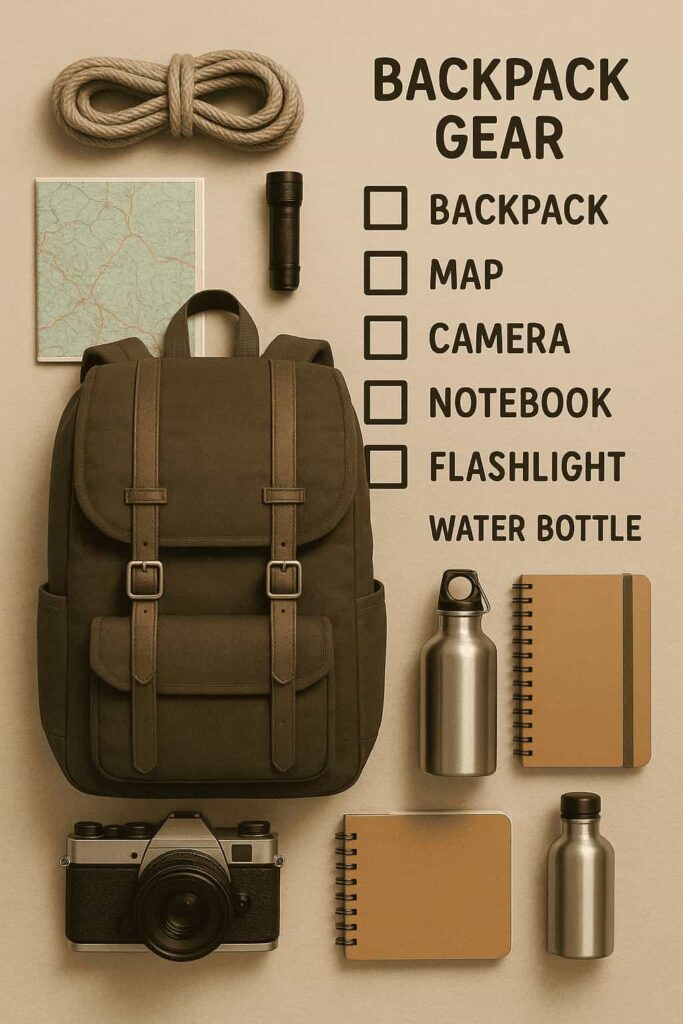
What is the meaning of Char Dham Yatra
The meaning of Char Dham Yatra is “Tirth Yatra”. In the old times, the pilgrims went on the Char Dham Yatra or Tirth Yatra when they had done their part in the world and were ready to meet their maker.
In those times, this Yatra had no roads, and the whole 1500 km Yatra was done on foot. The ritual and the belief were that they must go to Shri Yamunotri, and Shri Gangotri first to cleanse themselves, take some Yamuna Jal and Ganga Jal with them, go to Shri Kedarnath and do the Jalabhishek of Lord Shiva, and in the end go to Shri Badrinath Dham, which is a Mukti Dham on the earth that will end the endless cycles of life and death and will end all the sorrow.
This Yatra was so tough that people would have died on the way during the trek, and it was so often that sometimes pilgrims refer to this yatra as the antim yatra(last pilgrimage).
🧠 Mental Preparation: More Than Just a Physical Test
While the physical side of the toughest Char Dham Yatra often gets the spotlight, your mental resilience can make or break the experience.
🧘 Cultivating Patience and Inner Strength
The long queues at the temples, unexpected weather delays, and the sheer isolation on some routes demand a monk-like patience. Meditation or breathing exercises before your trip can help build this endurance.
🦳 Mindset for Beginners and Seniors
For first-timers or elderly pilgrims, it’s crucial to:
- Accept that it’s okay to go slow.
- Use available services without guilt.
- Be flexible with timing and plans.
Remember, your intent matters more than the pace.
📖 Stories of Devotees Who Made It Despite the Odds
🙏 Real-Life Experiences from Kedarnath and Yamunotri
One elderly couple from Maharashtra shared that they completed Kedarnath at age 70 using a palki, chanting all the way. A solo woman from Gujarat did Yamunotri on foot with minimal gear but unlimited faith.
🌠 Lessons Learned from the Journey
- Over-preparation often causes anxiety; pack wisely.
- Talk to fellow pilgrims. The journey becomes lighter.
- Faith moves mountains — literally, in these regions.
🎯 Which is the Toughest Char Dham Yatra? Final Verdict
Without a doubt, Kedarnath wins the crown for “Which is the toughest Char Dham Yatra”. The 17 km uphill trek, extreme weather, and high altitude make it the most demanding of all.
However, for elderly pilgrims, even Yamunotri’s steep 6 km trek can be exhausting. Meanwhile, Gangotri and Badrinath are relatively easy but spiritually rich.
Choose your challenge — but prepare well and go at your own pace.
📝 Conclusion
Char Dham isn’t just about reaching temples — it’s a journey of devotion, endurance, and discovery. Whether you’re a seasoned trekker or a first-time pilgrim, knowing what to expect from each Dham makes all the difference.
So if you’re still wondering which is the toughest Char Dham Yatra, now you know — it’s Kedarnath. But with the right gear, mindset, and preparation, you can conquer them all.
❓FAQs
1. Is Kedarnath tougher than Yamunotri?
Yes. Kedarnath involves a 17 km steep trek, while Yamunotri is 6 km. Kedarnath also has a higher altitude and harsher weather.
2. Can senior citizens do the Char Dham Yatra?
Yes, but it’s recommended they avoid trekking and opt for pony, palki, or helicopter services, especially for Yamunotri and Kedarnath.
3. Which Dham has helicopter services?
Helicopter services are available for Kedarnath and Badrinath from multiple locations like Phata, Guptkashi, and Dehradun.
4. What is the best time to visit Char Dham?
May to mid-June and September to mid-October are best for pleasant weather and safe roads.
5. Can beginners do the Char Dham Yatra?
Absolutely. With preparation, physical training, and the right gear, even first-timers can complete the Char Dham journey safely.

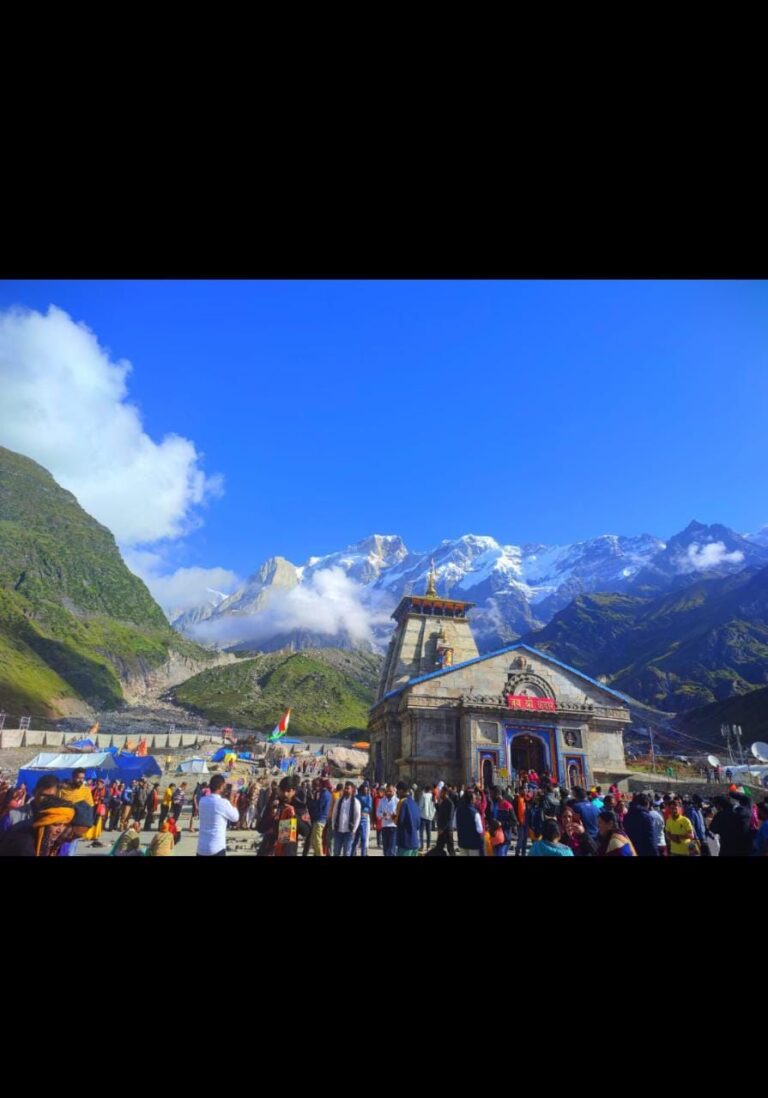
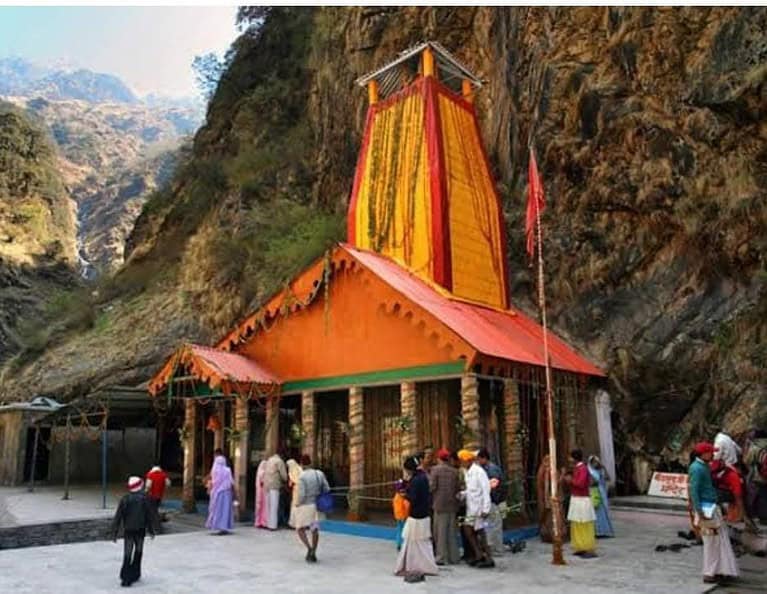
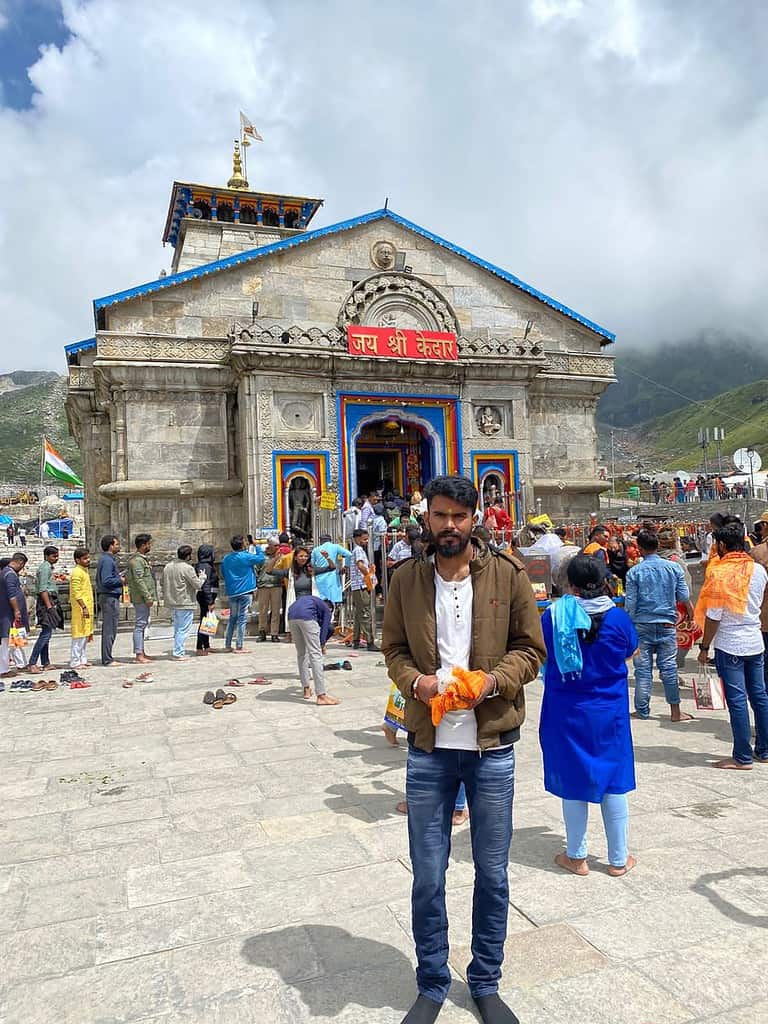
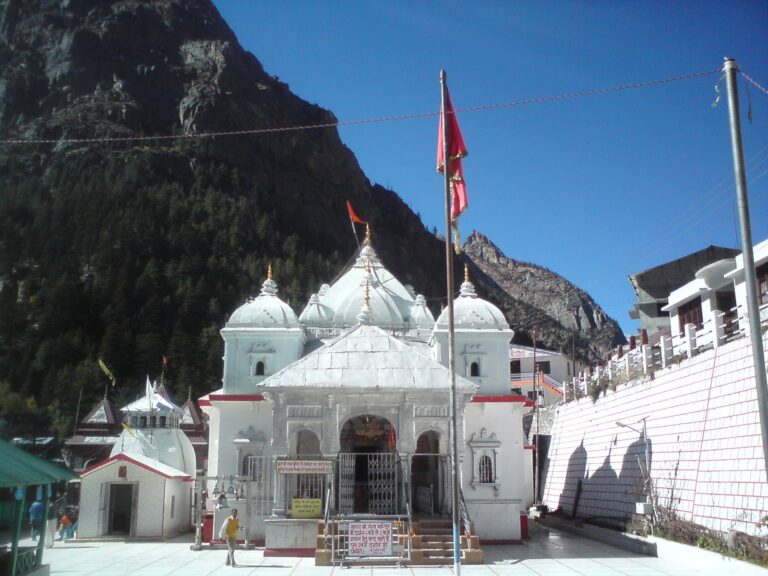
2 Comments